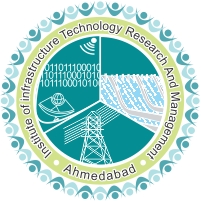Enhanced efficiency, durability and reproducibility of non‐fullerene acceptor organic solar cell with NiO as hole transport material: A computational study
Authors :- K Bhargava
Publication :- International Journal of Energy Research, Wiley, June 2022
The non-fullerene acceptor (NFA) based organic solar cells (OSCs) are gaining popularity owing to their lucrative properties like better stability, easy fabrication and broad absorption range which their fullerene-based counterparts fail to offer. This report presents a simulation-based comparison of NFA OSCs modelled by incorporating two different hole transport layers (HTLs) namely poly(3,4-ethylenedioxythiophene)polystyrene sulfonate (PEDOT:PSS) and nickel oxide (NiO) using SCAPS-1D. The performance analysis of cells are performed on the basis of variations in current density-voltage (J-V), quantum efficiency-wavelength, recombination rate-depth (RR-x), Nyquist plots and performance metrics: (a) open-circuit voltage (Voc); (b) short-circuit current density (Jsc); (c) fill-factor (FF); and (d) power conversion efficiency (η). Furthermore, the effect of HTL/absorber interfacial defect density towards the performance variation in cells is also compared. Furthermore, the durability assessment of cells is carried out in terms of performance degradation occurring due to gradual progression of potential-induced degradation effect inside the cells. Moreover, the reproducibility analysis is performed with respect to variations occurring in the carrier mobility of absorber layer. The results reveal better efficiency, durability and reproducibility of cell with NiO as HTL. The report highlights the importance of HTL properties towards improving the commercialization prospects of NFA OSCs.

